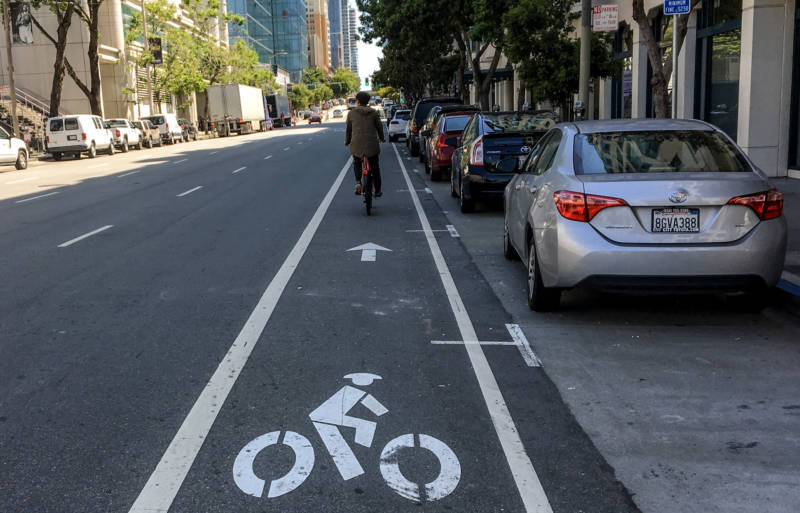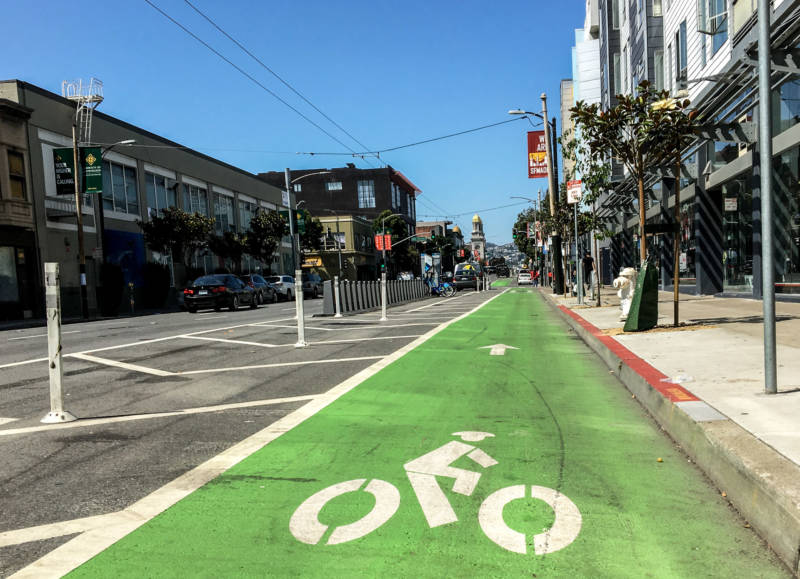Updated Wednesday, July 3
When the San Francisco Municipal Transportation Agency board voted unanimously last month to approve a $35 million plan to redesign two dangerous South of Market thoroughfares, it was taking a step toward embracing what planners and advocates of pedestrian and cyclists say is the future of the city's fastest-growing neighborhood.
The project promises a makeover for major sections of Howard and Folsom streets. The changes feature expansive new bike lanes, improved pedestrian crossings, and sophisticated traffic signaling designed to eliminate conflicts between bicycles and motor vehicles on the two boulevards between Second Street and 11th Street.
The project will also create a transit-only lane on Folsom that promises to make Muni bus service more reliable and new "public realm" sidewalk areas -- spaces akin to miniparks -- to be designed by community groups along the Howard and Folsom corridors.
The main driver for the changes is improving safety: The SFMTA notes that 391 traffic collisions have occurred over the last five years on the two corridors, which span roughly a mile and a half of each street. Of those crashes, 166, or about 40 percent, have involved pedestrians and cyclists.
Inside those statistics: Three cyclists and three pedestrians have been killed in the corridor since January 2013. Those incidents, the most recent of which occurred in March, have spurred demands for heightened safety measures and prompted the city to try a series of mostly short-term fixes to make the two streets safer.
Those immediate measures included the rapid expansion of a parking-protected bikeway along Howard Street after 30-year-old cyclist Tess Rothstein was killed March 8 while riding in an unprotected cycling lane between Fifth and Sixth streets.

The Folsom-Howard project, which has been under development for three years, is also driven in part by a recognition that the neighborhoods through which the two streets pass have changed dramatically from the light industrial and warehouse uses that characterized them in the mid-20th century.
Both streets are three-lane thoroughfares -- Howard one-way westbound, Folsom one-way eastbound -- that carry a sometimes chaotic mix of commute traffic, trucks making local deliveries and an increasing number of bicycle riders.
"There was just a different feel in this area of the city 50 or 60 years ago," said SFMTA engineer Paul Stanis, the Folsom-Howard project manager. Over the past couple of decades, the area has been marked by explosive growth in housing and employment.
"What we're doing is addressing that," Stanis said in an interview before the SFMTA board vote on June 18. "While these streets were designed for vehicles for many decades, we're now designing them for people."
Reconfiguring the streets will involve reducing the number of traffic lanes from three lanes to two in most areas. About 120 curbside parking spaces would be eliminated -- a typical point of contention for businesses that seek to ensure nearby parking for customers and need to load or unload merchandise and supplies from the street.
The SFMTA says it will accommodate businesses by increasing the number of loading zones along the corridor by 20 percent, a feat accomplished by removing some short-term parking and passenger loading zones along the two streets.


